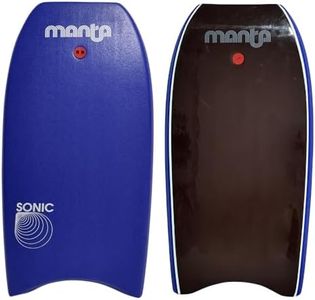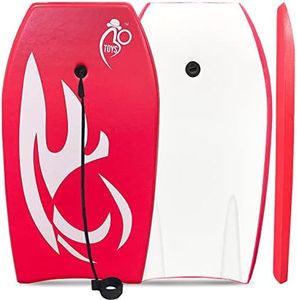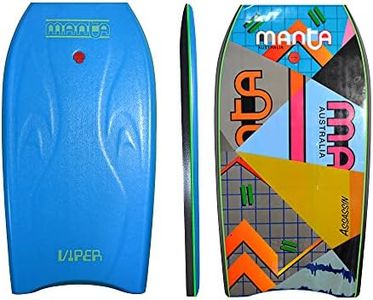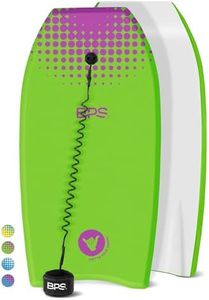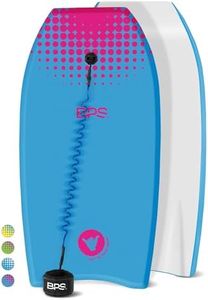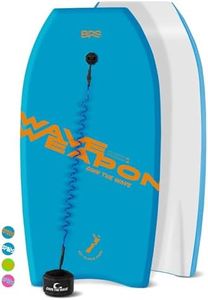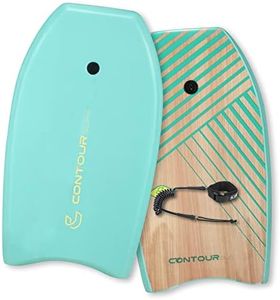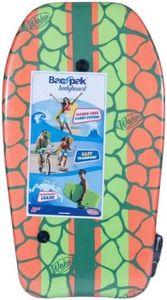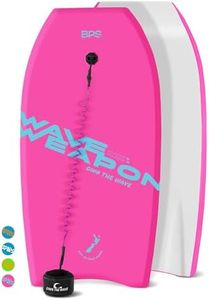We Use CookiesWe use cookies to enhance the security, performance,
functionality and for analytical and promotional activities. By continuing to browse this site you
are agreeing to our privacy policy
10 Best Kids Body Boards
From leading brands and best sellers available on the web.Buying Guide for the Best Kids Body Boards
Choosing the right body board for kids is all about ensuring safety, ease of use, and making sure that the experience is both fun and comfortable for young riders. It's important to think about how your child will use the board — whether it's just splashing around at the shoreline, learning to ride small waves, or progressing their skills. The right size, shape, and features of the board will have a big impact on how enjoyable and safe their time in the water will be. Focusing on these essential specifications will help you make an informed choice, ensuring that your child gets a body board that matches their needs and abilities.Board LengthBoard length refers to how long the body board is from nose to tail. This is a key factor because the right length will help your child control the board easily and ride comfortably. Generally, boards are measured against the height of the rider — if the board fits from the ground to around the belly button when stood upright, it’s a safe bet. Shorter boards are good for younger or smaller kids because they're easier to manage, while taller kids may need a slightly longer board for better float and support. Picking the right length mostly comes down to matching your child's height, which ensures fun and safety in the water.
Board WidthWidth affects how stable the board feels and how easily a child can grip it. A wider board offers more stability and is less likely to tip over, making it ideal for beginners or very young kids. Narrower boards can be a bit faster and more maneuverable, which is better suited for older or more confident kids. If your child is just starting, look for a board that is slightly wider to help them balance and feel secure.
Core MaterialThe core material is what the inside of the body board is made from, and this affects both the weight and durability of the board. Most kids’ boards use lightweight foam cores, such as EPS (expanded polystyrene), which are easy to carry and handle in small waves. Denser cores, like PP (polypropylene), make the board stiffer for better performance, which is useful for more advanced riders. For most younger kids and beginners, a lighter foam core is a good starting point because it’s forgiving and simple to maneuver.
Deck and Slick SurfaceThe deck is the top of the board where your child will lie down, while the slick is the smooth bottom that glides over the water. A soft, textured deck provides grip and comfort, reducing the chances of slipping off, while the slick surface ensures smooth riding. For kids, look for boards with comfortable deck materials and a slick bottom that’s durable to withstand beach play. Boards with extra grip are especially handy for younger children.
Leash AttachmentA leash is a strap that connects the board to your child's wrist or arm, preventing the board from floating away if they fall off. Having a leash is an important safety feature, especially in the surf. Most kids’ body boards come with a pre-installed leash plug and leash, but always double-check. The leash should be comfortable and secure, so your child can focus on having fun without worrying about losing their board.
Weight CapacityWeight capacity indicates how much weight the board can support without losing its float or performance. It's crucial to choose a board that matches or slightly exceeds your child's weight to ensure they get the right amount of float and stability. Manufacturers usually list a weight guide for each board. Make sure to check this and choose appropriately so the board remains safe and enjoyable to ride.
